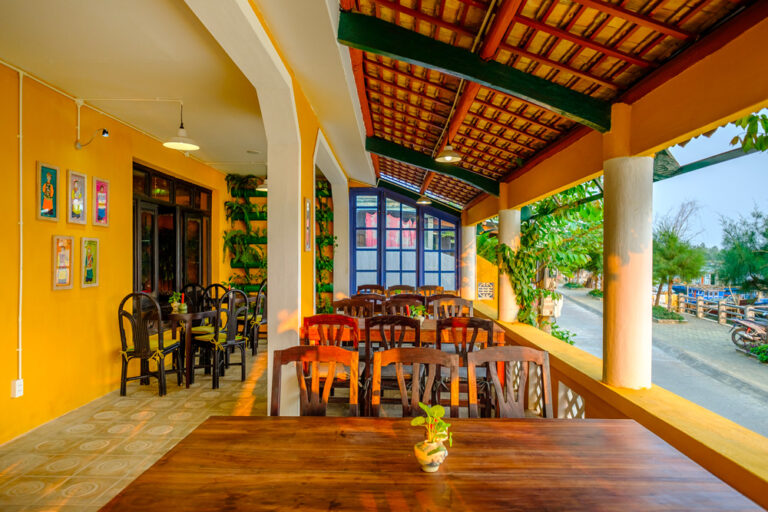Buying Art in Hoi An | Finding Gems & Avoiding Traps
Art is a matter of taste, a deeply subjective domain. What moves one person may leave another indifferent. That’s why this article doesn’t aim to list specific galleries in Hoi An but rather to offer practical advice for discovering interesting pieces and, most importantly, avoiding the many pitfalls that can accompany art purchases in this city.
Hoi An is a burst of colors and creativity, but among its dozens of galleries lies a less glamorous reality: mass-produced works, lack of price transparency, and questionable certificates of authenticity.
Here are the keys to navigating this world and leaving with a piece truly worth your while.
1. The Crucial Importance of an Artist’s Biography
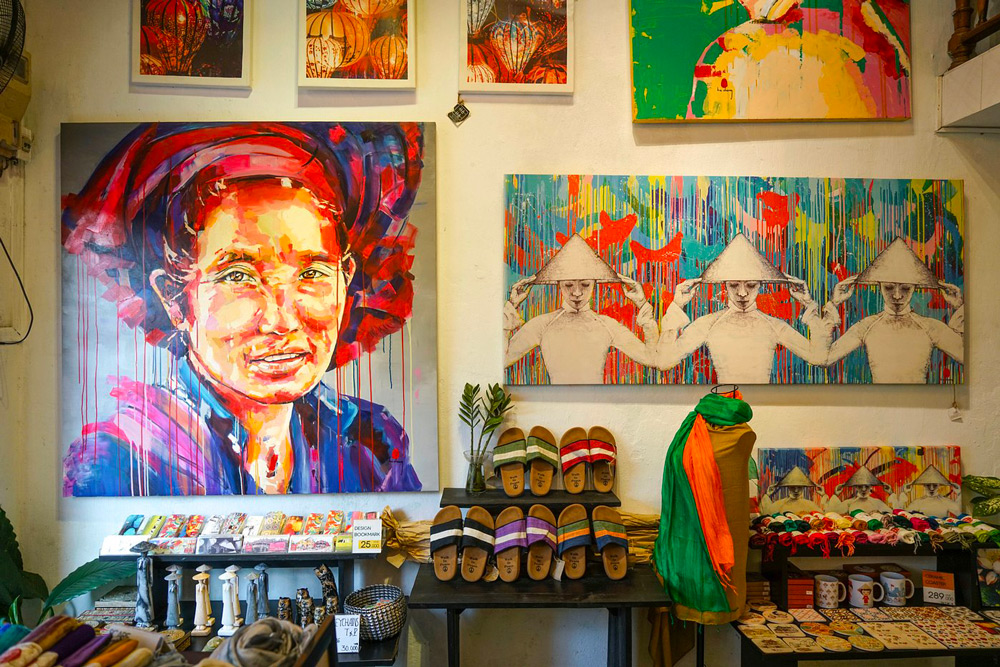
An artist’s biography is much more than just a text-it’s a reflection of their artistic journey. A reputable gallery should highlight these essential details:
- • Who is the artist?
- • Their artistic background (education, exhibitions, past projects).
- • Their style and influences.
- • Their philosophy or the intent behind their work.
When a biography is missing, be cautious. From my personal experience, the absence of a biography is often a red flag.
Here are some typical situations I’ve encountered:
• The Invisible Artist: You see a painting, ask to meet the artist, and are told they’re unavailable, living abroad, or that it’s a relative (a brother, a cousin). Yet, you find the same painting in another gallery, accompanied by a completely different “story.”
• Lack of Credibility: When you’re given vague or contradictory information, like “it’s an artist from Hanoi” in one gallery, then “an artist from Hue” in another. Such inconsistencies often indicate the works are not unique but mass-produced.
Advice: If no detailed biography is available or if the information seems unclear, walk away. No biography = it’s likely not an authentic piece of art.
2. Certificates of Authenticity: Essential but Often Incomplete
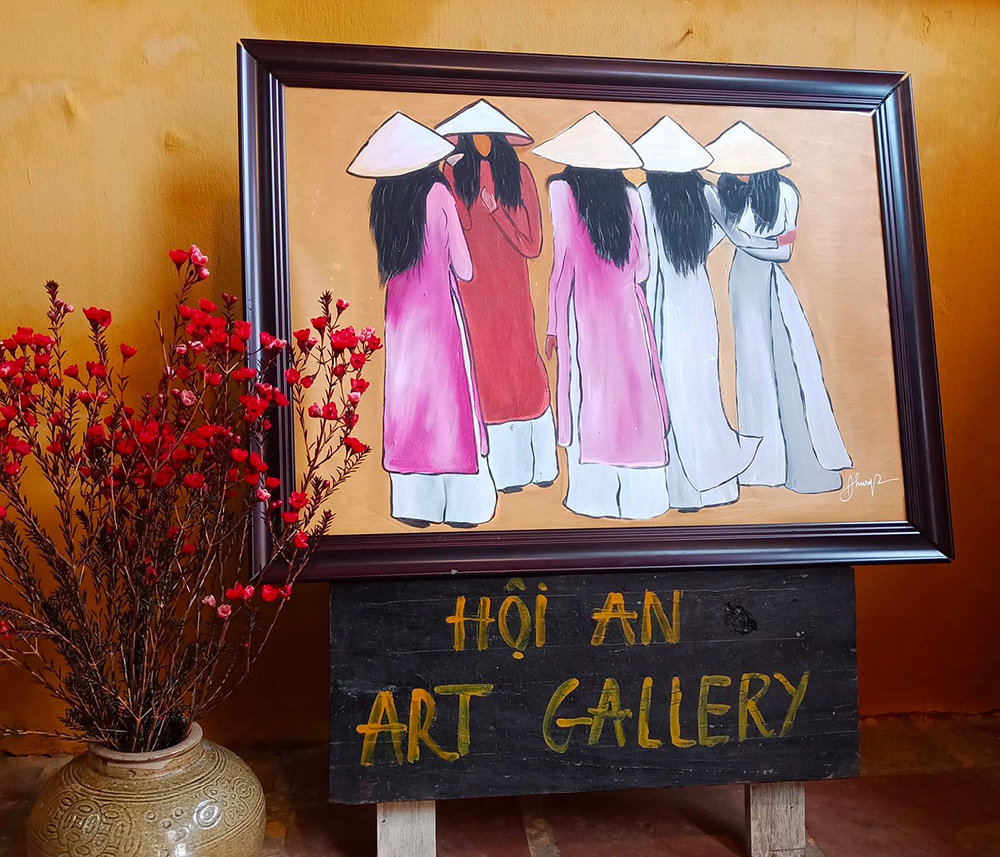
A certificate of authenticity should guarantee the uniqueness or rarity of a piece. However, during my visits to galleries in Hoi An, I’ve often asked to see these certificates and noticed that they frequently lack key information:
- • The dimensions of the piece (exact measurements).
- • The date of creation, which should always be included.
- • The numbering, essential for limited editions or unique pieces.
Why are these details crucial?
Without this information, it’s impossible to ensure that the piece is authentic or unique. In Hoi An, it’s not uncommon to find a so-called “unique piece” in multiple galleries, sometimes identical in every detail, sold as an original work.
Reminder: If the certificate doesn’t include these details, it’s better not to make the purchase.
3. Professionalism: Gloves, Cleanliness, and Packaging
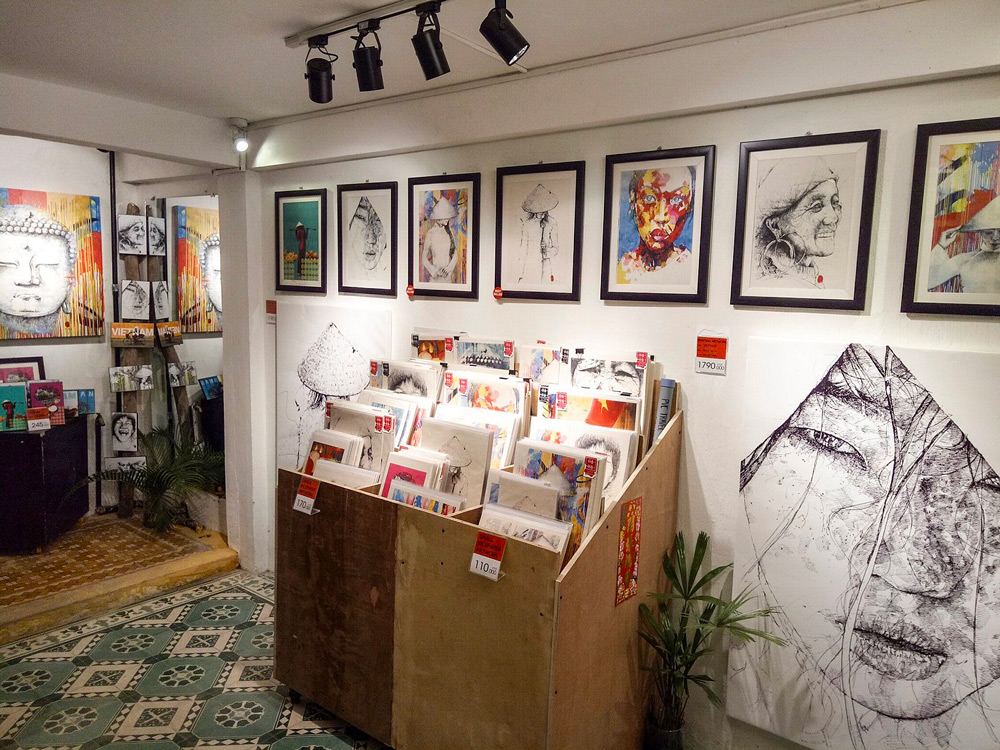
A professional gallery demonstrates respect for the works it sells. This is reflected in how the pieces are handled and presented. Here are a few things to look out for:
- Use of gloves: It’s not uncommon to see staff handling paintings or photographs without any care, potentially leaving marks or causing damage. A reputable gallery always handles its pieces with gloves.
- Cleanliness: A well-maintained gallery is a sign of professionalism. Artworks should never be stacked on the floor or handled carelessly.
- Packaging: An expensive piece deserves proper and careful packaging-not just a cheap plastic tube with tape.
My observation
In Hoi An, I’ve come across galleries where paintings were stacked or even thrown on the floor to show different variations of the same work. This kind of treatment is a clear signal that you’re not being offered a truly valuable piece.
Advice: If the artworks are not handled and presented with care, walk away. Professionalism is evident in the details.
4. Price Transparency: A Mark of Professionalism
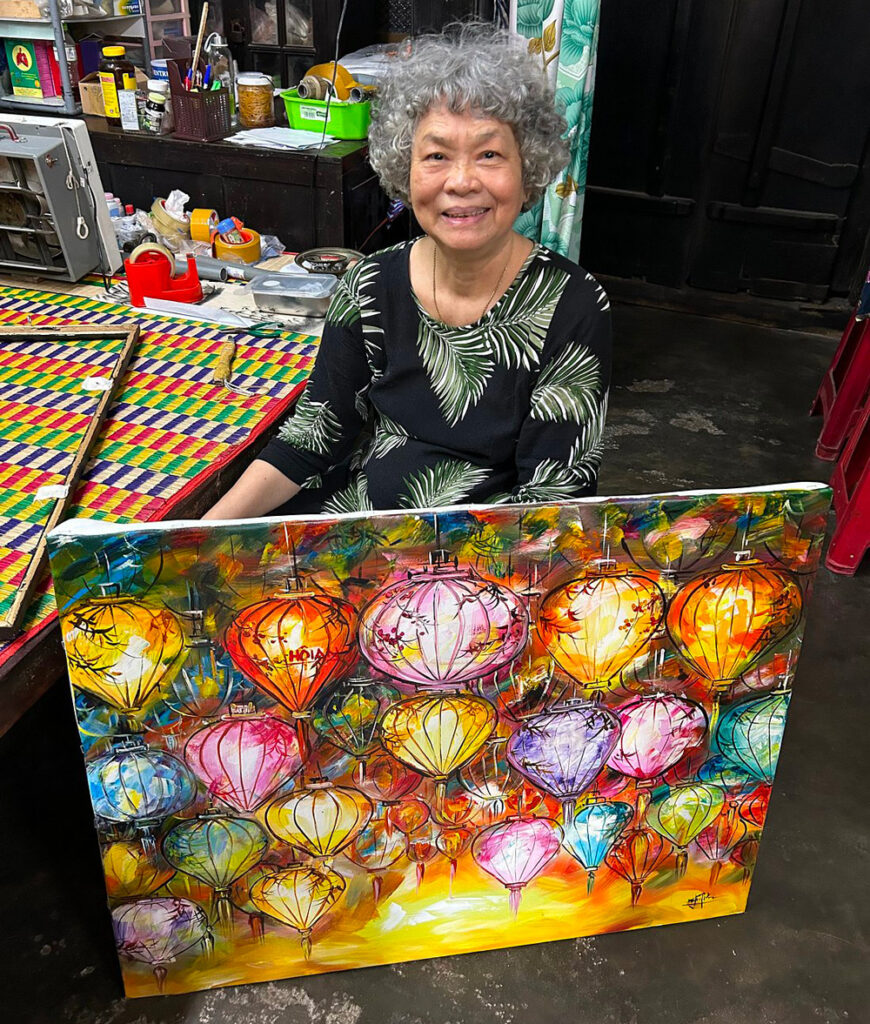
In Hoi An, it’s common for prices to vary depending on the perceived wealth of the buyer (this applies to the rest of Vietnam as well). A piece offered to one person for 60 million dong might be sold to another for 100 million, simply because they’re seen as having a bigger budget. This practice is widespread in Hoi An, across many sectors.
How to recognize a reputable gallery?
- Prices are clearly displayed or available in a catalog.
- Rates include or explicitly mention additional costs (such as shipping).
Hoi An’s push for more transparency
The city has recently started encouraging, and in some cases requiring, galleries to display prices to combat this kind of practice. It’s a step in the right direction, but it’s not yet universally adopted.
Advice: If prices aren’t displayed or seem inconsistent, proceed with caution and don’t hesitate to ask for a catalog or a written price list.
5. Internet and Reviews: A Valuable Last Resort
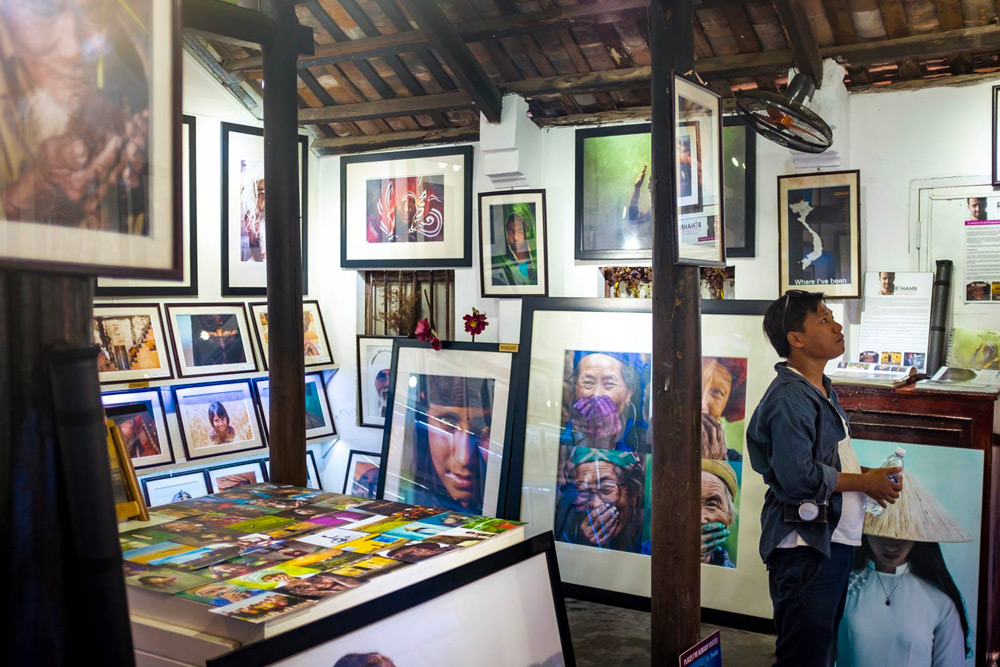
After visiting a gallery, take some time to research its reputation online.
- Website: A professional gallery should have a functional, well-designed website with information about the artists and their works. The absence of a website, or an outdated one, is often a red flag.
- Check the number of reviews: A gallery that has been open for 10 years but only has 30 reviews may lack visibility or credibility.
- Analyze the comments: Detailed reviews from active profiles are more reliable than generic remarks or reviews from profiles with only one post. Keep in mind that business owners often ask friends or employees to leave positive reviews.
6. Souvenir Paintings and Decorative Items: What to Avoid
In Hoi An, you’ll find many shops selling souvenir paintings, postcards, or magnets. These products are often based on stolen photos from the web, mass-printed with mediocre quality due to the lack of original files. Purchasing these items supports practices that disrespect artists and their work.
Conclusion: Find Your Treasure with Confidence
Buying art in Hoi An can be an enriching experience, but it requires vigilance. A reputable gallery should offer transparency, professionalism, and clear information.
Before making your choice, take the time to ask questions, compare options, and verify these essential criteria:
- A complete biography of the artist.
- A numbered certificate of authenticity.
- Clearly displayed and fixed prices.
- Careful handling of the artwork and proper packaging.
- An explanation of the story and intention behind the piece.
If a gallery meets all these conditions, you can purchase with confidence. If not, keep searching-Hoi An is full of treasures, but only a few are truly worth discovering.


